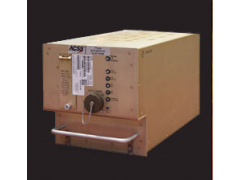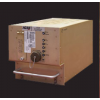Advanced Surveillance in One Integrated Package
T³CAS® traffic management computer is the next generation integrated communication and surveillance system from ACSS, combining multiple products into a single computer.The T³CAS features TCAS II with Change 7.1 software, performance-based Class A TAWS and Mode S Transponder updated for DO-260B with full ADS-B IN/OUT capability. The T³CAS provides operators with proven performance and reliability of TCAS, TAWS, Mode S and Automatic Dependent Surveillance Broadcast (ADS-B) functions with the benefits of reduced weight, size, power consumption and costs that comes from an integrated platform.
T³CAS is a single LRU with the flexibility to host any combination of these functions:
Traffic alert and Collision Avoidance System (TCAS)
Terrain Awareness Warning System (TAWS)
Mode S Transponder
Airborne Traffic Situation Awareness (ATSA) / SafeRoute® ADS-B In applications
T³CAS uses an integrated RF transceiver module for the TCAS and Mode S functions. As a result, only a single set of antennas is required and the aircraft antenna count and cabling is reduced. The T3CAS platform delivers full functionality in both 6- and 4-MCU sizes, and utilizing the existing TCAS tray and connectors.
For proven functionality, lower acquisition and ownership cost, and increased safety and efficiency, choose the T3CAS traffic management computer from ACSS.
TCAS
ACSS TCAS II products provide situational awareness and collision avoidance protection on more than 15,000 aircraft worldwide. The TCAS within the T³CAS is built on the technology and expertise that has made these products the industry standard in reliability and performance. The T³CAS continues the tradition of providing the highest bearing accuracy and range capability available. The surveillance algorithms provide outstanding aircraft tracking performance, and the Collision Avoidance Logic includes the most current safety upgrades (TCAS Change 7.1). The T³CAS also implements ADS-B technology with A3 receiver sensitivity, enabling intruder aircraft tracking at ranges of 160 nmi and the implementation of TCAS Hybrid Surveillance.
TAWS
ACSS offers Class A Terrain Awareness Warning Systems (TAWS) as a stand-alone product (TAWS+) or integrated into a single LRU with other ACSS functions, such as in the T³CAS and T2CAS. ACSS TAWS can provide warnings based on the unique performance capability of an aircraft. It can be applied to any air transport, regional, business or military aircraft to avoid Controlled Flight Into Terrain (CFIT) incidents, giving operators the appropriate amount of time to clear terrain with a greater margin to maneuver. When the system detects that the aircraft does not have sufficient climb capability to clear the terrain, it generates an “Avoid Terrain” alert. The Terrain Advisory Line is a patented feature that indicates an impending alert should the aircraft continue on its flight path.
Mode S Transponders (ADS-B Out)
ACSS’s Mode S transponders are certified to DO-260B, and meet the ADS-B Out mandates for impending airspace initiatives throughout the world. DO-260B enables transmission of ADS-B information about an aircraft’s position, speed and intent. ADS-B is the cornerstone technology of the FAA’s NextGen and Europe’s SESAR airspace initiative. Mode S transponders from ACSS incorporate FAA-specified diversity, allowing simultaneous operation with both top and bottom transponder antennas optimizing signal strength and reducing multi-path interference.
ADS-B In Applications
T3CAS can host ADS-B In applications that increase safety, efficiency and throughput for flight operators. ADS-B In applications, known as Airborne Traffic Situation Awareness (ATSAW), provide improved safety and operational efficiency for operators in all phases of flight, including enhanced situational awareness, flight-level change performance in non-radar coverage areas, such as oceanic airspace, and Visual Separation Approach. ACSS’s SafeRoute® ADS-B In Solutions feature Merging & Spacing (M&S), In-Trail Procedures (ITP), CDTI Assisted Visual Separation (CAVS) and Surface Area Movement Management (SAMM). These functions offer fuel savings that result from flying more predictable routes with fewer vectors, and safety that comes from a moving map display with own-ship position in the air and on the ground. During taxi, SafeRoute complements out-of-window taxi ops and helps to avoid potential runway incursions.
ADS-B IN FEATURES
CAVS/M&S
Reduce emissions by 34%*
Reduce noise footprint of an operator by 30%*
Reduce fuel burn by 40-70 gallons per arrival (B757 example)*
Saves fuel by enabling pilots to fly more direct routes
Reduced delays in operations
Works with Next Generation Air Traffic Control Systems (NextGen, SESAR)
SAMM
Combats runway incursion through improved situational awareness
Enhances safety in the air and on the ground
ITP
Improved efficiency – More effective flight level changes that reduce fuel burn
Improved flexibility – Enhanced pilot-controller collaboration that enables more flexible operation
Improved safety – More effective flight level changes to avoid known turbulent conditions
– Illustrations are for demonstration purposes only and not for proximity or scale
– Cockpit Display of Traffic Information (CDTI) was jointly developed by ACSS and Astronautics
* – From UPS study





